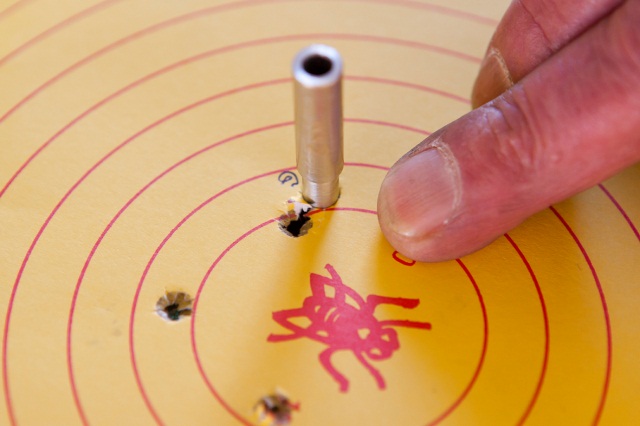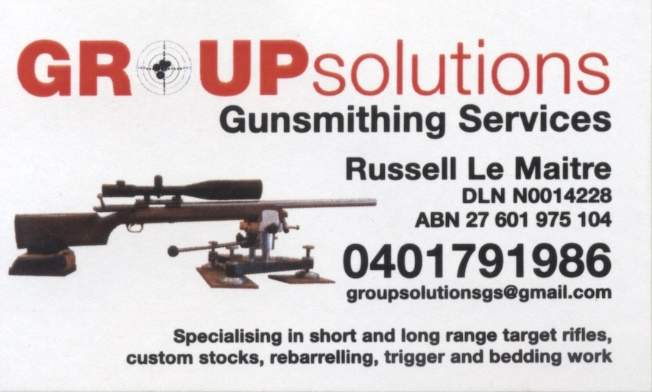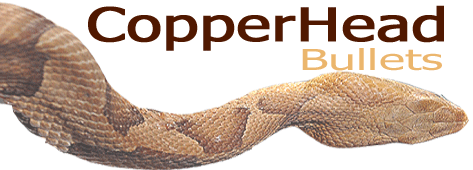Scoring may appear simple to many people but there are plenty of traps for the new-comer.

Let’s start with traditional benchrest over 100 & 200 yards. In a registered match there must not be anything of substance behind the target by regulation, which means we get bullet holes that are clear and round. The size of the group is then easily measured with a magnified measuring device or a digital caliper zeroed across a sample bullet hole on the sighter. Typically a 6mm or .243″ bullet produces a hole measuring .236″ due to the flex and spring-back of the paper. Remember also that the paper used for both group and score matches are strictly specified to ensure that all of the above takes place consistently. In order to be fair to competitors all targets should be measured by one individual so that the interpretation is consistent. In ‘Hunter Class’ we are checking single shots for their score. Once again the consistency achieved by a single person doing the scoring is important. An experienced scorer will be able to determine ‘line-calls’ with the naked eye in many cases. At other times he may resort to using a gauge to make the decision, even then two different people may vary in their interpretation of a real close one.
All fairly straight forward to now! The only real trick thus far is to implement the accuracy and consistency quickly. This ability will come with experience. “So where’s the problem” I hear you cry!! Wet targets!!, that’s one of several issues that can and do occur. This one is a scorer’s nightmare. Since the regulation paper is akin to blotting paper, the targets become fragile and hard to handle. As well as that the edges of bullet holes can become quite indistinct. We cannot wait for the paper to dry out as this would delay the posting of results but more importantly the targets will shrink and reduce the group size! Earlier this year I was asked to check score a set of 5 targets that had been lodged for a record claim for smallest group aggregate at 200 yds. The original measurements were done on targets of varying wetness, but knowing the scorer and his experience, it was likely that his group measurements were close to the mark. On checking the now dry targets, the measurements were giving substantially smaller groups but by widely varying degrees. In the end I had to resort to measuring single bullet holes in the target to establish some idea as to the degree of shrinkage and then apply the factor resulting to the group measurement to arrive at my estimate of the original group size. Having done this I was able to assign group sizes not significantly different from the original measurements. The targets then passed to Max Coady who used whatever his method might be to provide a third set of group sizes and hence aggregates. Happy ending after a lot of work for three people was that a new record was still achieved. Another thing we have learned over the years is just how little interference in a bullet’s flight it takes to put it way off line. The tiniest raindrop will have an influence if struck. A few years back myself and Paul Sullivan each lost a shot at 100 yards by over 2 inches which we were later able to put down to a ‘Bee Strike’ at around 75 yards. This insect, weighing only a fraction of our 68gn bullets, was able to de-stabilise and divert our bullets that much in a mere 25 yards. Why do I mention this? On various occasions a shooter has called one of his own shots a cross-fire because he could not imagine it being that far off in readable conditions – causing the scorer some grief in the process.
Now, finally, getting on to 500 metre fly scoring. In the preceding paragraphs we have addressed either ‘group’ OR ‘score’ match events whereas the Fly combines these two into a single total result. As such, all the lessons learned from other disciplines apply with a few other problems thrown in. Firstly there is the matter of the target paper. Since there is no specification, targets from one supplier to another can vary in weight/quality. Even at one venue we may encounter a switch mid-match from one batch to another. This puts pressure on the scorer to note a change in paper and re-set his parameters with regard to ‘line-calls’.

The next issue with the Fly is the means by which the paper target is mounted to the frame. The most common method is to staple the target to a core-flute, or similar board. This will create some interesting effects. If the backing is intact (and in effective contact) the bullet hole will be different in size to one shot with a perforated backing. To the point where a gap in the backing
will give a round hole of different size and a half and half situation may, and has been observed to create a slightly oval hole. How do we score this fairly and equitably if it’s a ‘line-call’? Once again, one scorer equals consistency, but there may be issues with a record claim which must involve multiple scorers. Some years ago when we attended our first Fly match in Brisbane, I was perturbed to note that the targets were being attached to boards with a big hole behind the scoring zone of the target. I thought that we would struggle to see bullet holes due to light coming from the rear as had been the case elsewhere, including our home range in Victoria once the centre of the black core-flute had been shot to bits. As it happens there was no problem due to the extremely dark background and the location of the sun during the match. This set me thinking and I devised our current system of the targets attached by tape (saves pulling staples) to a light-weight plywood board with a hole behind the scoring zone but with a thin black membrane (piece of garbage bag – easily renewed) covering it. Best of all worlds – fast target changes, round and consistent bullet holes, competitors can spot their shots – but most importantly the scorer’s job simplified to a degree.

Having a knack for quick mental arithmetic is also very handy when trying to work through a pile of targets in good time. A valid double check of the total arrived at is often easiest by working backwards and adding the points lost on each shot. A good computer program such as the excel spread-sheet devised by Anthony Hall saves a lot of time in the final calculations and also enhances accuracy. Personally, I like to transpose the scores from the target to a written sheet (hard copy) as a back-up in case of a computer glitch. The data entry into the computer can be done either from the targets themselves or from the paper score-sheet. If a competitor queries a tabulated score, the data entry can first be checked against the paper copy rather than having to retrieve the target immediately.



 A note on gauges – rather than jamming a bullet into the hole (which is invariably a tight fit and may cause damage) a proper gauge would have a ‘pilot’ of some .004 to .006″ (.10 to .15mm) under nominal bullet diameter then an abrupt shoulder out to full bullet diameter. If this shoulder touches the line the higher score applies. If some-one can offer a better suggestion I welcome that discussion.
A note on gauges – rather than jamming a bullet into the hole (which is invariably a tight fit and may cause damage) a proper gauge would have a ‘pilot’ of some .004 to .006″ (.10 to .15mm) under nominal bullet diameter then an abrupt shoulder out to full bullet diameter. If this shoulder touches the line the higher score applies. If some-one can offer a better suggestion I welcome that discussion.
 Finally – group sizes on Fly targets. There are 2 parts to group measurements. Firstly there is the score for group size component, and secondly there is the small group award for the shoot in each class as well as national and range records for small group.
Finally – group sizes on Fly targets. There are 2 parts to group measurements. Firstly there is the score for group size component, and secondly there is the small group award for the shoot in each class as well as national and range records for small group.

For the score component a steel ruler clearly marked in inches is sufficient and quick for most targets, with a digital caliper needed only for groups that go close to a measurement line. For the small group award and or records, until now we have had the luxury of simply measuring these by going from LH edge to LH edge or RH to RH, using a caliper. The way things are progressing in fly shoots we may see one-hole 5 shot groups at 500m!, so some experience of measuring these will come in handy.
In the event of wet targets and a record claim, we have the added luxury of much less affected paper, since fly targets are usually printed on semi-gloss paper that does not behave like blotting paper and the methods outlined earlier in this article.
You will find a discussion topic on the forum section of the Fly Shooter website related to this article. All comments and questions are welcomed, especially from those that wish to contribute to their sport by taking on the role of ‘scorer’.
Pete van Meurs





